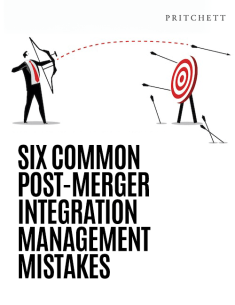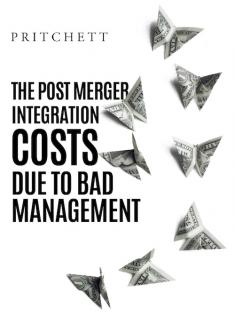Post-Merger Risks
- “Wait and See” attitude. When people who are normally confident and assertive take a more tentative, safe stance, it can slow down decisions and customer responsiveness. And although it seems perfectly natural for people to adopt a slower, more cautious approach during times of uncertainty and change, the result can be deadly in terms of business results.
- Complexity. Merging more than needs to be merged, at least initially, can over-complicate things. After all, organizations have a lot of moving parts. And it would be easy to put together such an extensive integration “to-do” list that people could be overwhelmed. So the risk is making the combination process harder than it needs to be. Or, working on everything at once, without prioritizing what’s really important now . . . and what can wait.
- Failure to promise change. The degree of change may vary from deal to deal, but there will be change. The changes may not be immediately apparent. It may seem like “business as usual” in terms of roles and responsibilities. Then, somewhere down the line, changes begin to be introduced in order to tighten the linkages between the companies. The danger is that when these changes occur, people will cry “foul” because they were not told earlier to expect them.
- Integrating to serve the organization instead of integrating to serve customers. This happens whenever internal needs drive integration planning, without respect for the impact on customers. As a result, organizations can waste hundreds of man-hours discussing issues like organizational structure and technology . . . without considering how the final result might impact business results. So, the proper order is: #1: Business Strategy, #2: Impact on Customers/Revenue/Growth, #3: Go to Market Strategy, and then, and only then, #4: Integration Planning to support these business fundamentals.
- Slow execution. Once you’ve clarified the combined business strategy, assessed the impact on growth, and put together a plan for how the combined business will go to market, then you should put the pedal to the metal and execute your integration plan. People need to see crisp, decisive action, clear direction, and results that demonstrate that the deal can truly create value.




